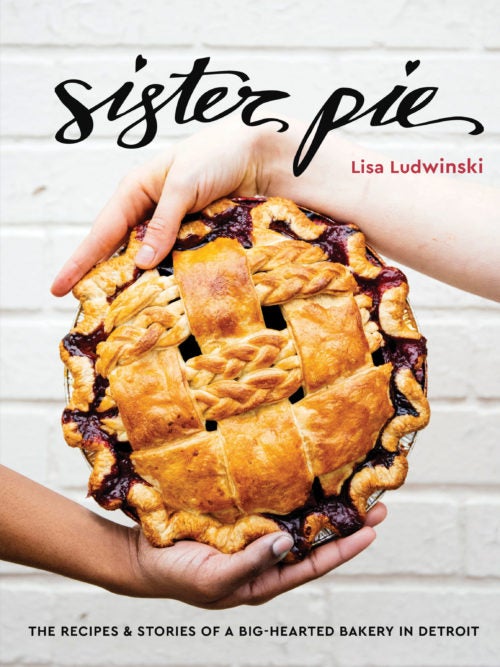Apple Sage Gouda Pie
1
9-inch pie
Dessert
Course
Print Recipe
Ingredients
Directions
Aged Gouda Pie Dough
2 ½ c
all-purpose flour

1 tsp
granulated sugar

1 tsp
kosher salt

1 c
unsalted European-style butter, straight from the fridge

1 oz
aged Gouda, grated

½ c
ice-cold water mixed with 1 tablespoon apple cider vinegar

Apple Sage Gouda Pie
2 lb
Northern Spy, Idared, or Golden Delicious apples, peeled and sliced

1 tsp
freshly squeezed lemon juice

¾ c
granulated sugar

2 tbsp
minced fresh sage

¼ c
packed light brown sugar

¼ c
tapioca starch

½ tsp
ground cinnamon

½ tsp
ground nutmeg

¼ tsp
kosher salt

1
disc Aged Gouda Pie Dough, rolled out and fitted into a 9-inch pie pan but uncrimped, and refrigerated

6
lattice strips made with Aged Gouda Pie Dough, placed on a parchment-lined baking sheet and refrigerated

1 tsp
teaspoon turbinado sugar mixed with 1 teaspoon all-purpose flour

2 tbsp
unsalted butter, cubed and chilled

1 lg
egg, beaten

The combination of fruit and cheese dates back to ancient times, and we’re keeping the tradition alive with our slightly savory apple pies.
Every apple wants to be a baking apple, and the number of choices is downright overwhelming. What you want is an apple that won’t shrink too much, maintains a firm texture, and is not too syrupy-sweet in flavor. We’ve had good luck with Golden Delicious, Jonagold, Granny Smith, and Idared. You can mix them, but we’ve had the best results when we stick with one type to achieve a consistent, even texture throughout the pie.
Directions
Aged Gouda Pie Dough
- In a large stainless steel bowl, combine the flour, sugar, and salt and stir to mix well. Place the sticks of butter in the bowl and coat on all sides with flour. Using a bench scraper, cut the butter into 1⁄2-inch cubes. Work quickly to separate the cubes with your hands until they are all lightly coated in the flour mixture. Grab that bench scraper once again and cut each cube in half. I always tell my pie dough students that it’s unnecessary to actually cut each cube perfectly in half, but it’s a good idea to break up the butter enough so that you can be super-efficient when it’s pastry blender time.
- It’s pastry blender time! Switch to the pastry blender and begin to cut in the butter with one hand while turning the bowl with the other. It’s important not to aim for the same spot at the bottom of the bowl with each stroke of the pastry blender, but to actually slice through butter every time to maximize efficiency. When the pastry blender clogs up, carefully clean it out with your fingers (watch out, it bites!) or a butter knife and use your hands to toss the ingredients a bit. Continue to blend and turn until the largest pieces are the size and shape of peas and the rest of it feels and looks freakishly similar to canned Parmesan cheese. Speaking of cheese, now is the time to add the Gouda and mix it in quickly with the pastry blender until it is evenly distributed.
- At this point, add the water-vinegar mixture all at once, and switch back to the bench scraper. Scrape as much of the mixture as you can from one side of the bowl to the other, until you can’t see visible pools of liquid anymore. Now it’s hand time. Scoop up as much of the mixture as you can, and use the tips of your fingers (and a whole lot of pressure) to press it back down onto the rest of the ingredients. Rotate the bowl a quarter-turn and repeat. Scoop, press, and turn. With each fold, your intention is to be quickly forming the mixture into one cohesive mass. Remember to incorporate any dry, floury bits that have congregated at the bottom of the bowl, and once those are completely gone and the dough is formed, it’s time to stop.
- Remove the dough from the bowl, place it on a lightly floured counter, and use your bench scraper to divide it into two equal pieces. Gently pat one into a 2-inch-thick disc, working quickly to seal any broken edges before wrapping it tightly in a double layer of plastic wrap. Pat the other half into a 6 by 3-inch rectangle. Refrigerate the dough for at least 2 hours or, ideally, overnight. When you go to roll out the crust, you want the disc to feel as hard and cold as the butter did when you removed it from the fridge to make the dough. This will make the roll-out way easier.
- You can keep the pie dough in the fridge for a few days or in the freezer for up to 1 year. If frozen, remove the dough and place in the refrigerator to thaw one full day before you intend to use it.
Apple Sage Gouda Pie
- Make the filling: Transfer the apples to a large mixing bowl and toss with the lemon juice.
- In a medium bowl, combine the granulated sugar and sage, massaging together with your fingertips. Add the brown sugar, tapioca starch, cinnamon, nutmeg, and salt. Add to the apples and toss with your hands until evenly distributed.
- When you’re ready to assemble the pie, remove the unbaked crust and lattice strips from the refrigerator. Sprinkle the sugar-flour mixture all over the bottom of the crust. Layer the apples on top, being careful not to mound them in the center. Dot the apples with butter cubes.
- Place one strip of lattice across the center of the pie. Take another strip and lay it on top, perpendicular to the first one, creating a cross. Lay the next two strips on either side of the first strip you laid down, so they are parallel to both each other and the original strip. Next, working with the original strip, fold back both ends toward the center, and then place the last two lattice strips down on either side of the second (perpendicular) strip. Fold the original strip back down, so that it lies across and on top of the newly placed strips. It should look like a woven lattice.
- Tear off the ends of the lattice pieces so they are flush with the perimeter of the tin. Roll the edge of the crust in, sealing the lattice. Crimp, using the technique described on page 49, being careful to push the crimps down and into the pie, as opposed to keeping them too loose on the edge. Put the assembled pie in the freezer for a 15-minute rest.
- Preheat your oven to 450°F. Line a baking sheet with parchment paper.
- Remove the pie from the freezer, place on the baking sheet, and brush the lattice and crimped edge with the beaten egg. Transfer the baking sheet with the pie on it to the oven and bake for 15 to 20 minutes, or until the crust is evenly golden brown. Turn the temperature down to 325°F and continue to bake for 50 to 70 minutes, until the pie juices are bubbling in the center.
- Remove the baking sheet from the oven and transfer the pie to a wire rack to cool for 4 to 6 hours. When the pie is at room temperature, slice it into 6 to 8 pieces and serve.
- Store leftover pie, well wrapped in plastic wrap or under a pie dome, at room temperature for up to 2 days.
Reprinted with permission from Sister Pie by Lisa Ludwinski, copyright © 2018. Published by Ten Speed Press, an imprint of Penguin Random House. Photography credit E. E. Berger © 2018

